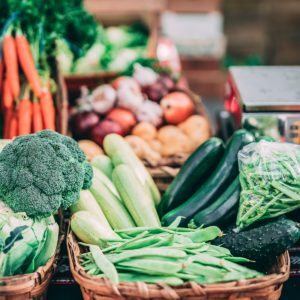Fresh food sprouts on high-rise rooftops, schoolyards, once-abandoned buildings and floating barges are a dramatic scene. Gardened spaces indeed have a vibrant, endearing environment as compared to vacant lots.
But other than turning civic blight into lively blossoms, are these urban farms any good? According to a new report released by the Center for a Livable future at Johns Hopkins, the answer is not as straightforward. To start with, there’s the good news – urban farms contribute to easier and cost-friendly access to fresh foodstuffs. It also potentially contributes to reduced emission of greenhouse, increased training opportunities for the workforce, higher property values, opportunities for community involvement, and improved sequestration of carbon.
Well, these are clear, black-and-white benefits. There’s no denying them.
Tyson Gersh is a farm manager at co-founder at Michigan Urban Farming Initiative, Detroit. His one-acre farm has outputted over 50, 000 pounds through the last four seasons, providing a supply of fresh vegetables and fruits that low-income residents otherwise wouldn’t have access to. Mr. Gersh agrees that urban farming engages communities and revitalizes neighborhoods. It’s big impact on a relatively smaller group of people. But when it comes to ending hunger, it doesn’t work.
The Johns Hopkins report asserts that urban farms are superb neighborhood centers, rather than hubs of agricultural (commercial) production. Apparently, growing enough plants to service the food needs of urban dwellers is a huge challenge for urban agriculture. Globally, at least 20 percent of the world’s total food production takes place in urban areas. But the U.S. is still very far from that number. The City of New York, which is at the forefront of urban farming in the U.S, is transforming suitable vacant plots into productive farms that feed up to 160, 000 residents. But compared to the city’s population of 8.4 million, this is a drop in the ocean.
The other main challenges for urban farming outlined in the report include poor management practices for the soil, inefficient utilization of resources, and health risks attached to airborne pollutants. The report also acknowledges that city farming is a new area that needs to be promoted. For instance, researchers need to gather more data and engage farmers, in order to encourage federal organization such as the U.S. Department of Agriculture and other bodies to prioritize it.
Ms. Palmer at the Johns Hopkins Center for a Livable Future says that despite the significant challenges highlighted in their report, it was not intended to discourage city farming. The real intent, she says, is to help everyone understand both the negative and positive impacts of urban farming. Although this revolutionary kind of farming won’t be feeding any other soul living in cities, it’s still a transformative and powerful trend.




Leave a Reply